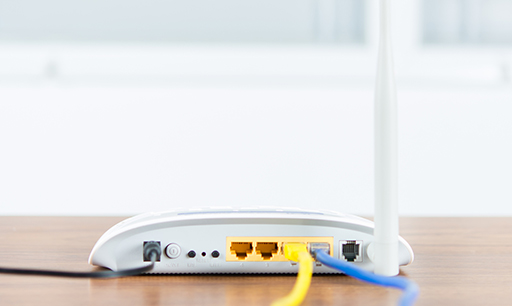Massive UPnProxy router flaw leaves millions open to hack attacks
UPnProxy vulnerability could expose more than 45,000 routers to exploits linked to EternalBlue


More than 45,000 routers could be open to exploits linked to EternalBlue, the malware developed by the US' National Security Agency (NSA).
According to a blog post by security researchers at Akamai, the UPnProxy exploit targets routers with vulnerable implementations of Universal Plug and Play to force connected devices to open ports 139 and 445. This allows the obfuscation and routing of malicious traffic to launch denial of service attacks and spread malware to other devices. This exploit in routers has led to around two million networked devices, such as laptops and smartphones, being open to attack.
"While it is unfortunate to see UPnProxy being actively leveraged to attack systems previously shielded behind the NAT, it was bound to happen eventually," said Chad Seaman, one of the authors of the report.
The attack relies on two exploits, EternalBlue, a backdoor developed by the NSA to target Windows computers; and its "sibling" exploit EternalRed, used to backdoor Linux devices.
UPnProxy modifies port mapping on a vulnerable router while the Eternal exploits target ports used by SMBs on endpoint devices. Akamai has dubbed the new attack as "EternalSilence".
Tens of thousands of routers have so far been affected, with millions more in the sights of attackers.
"The goal here isn't a targeted attack. It's an attempt at leveraging tried and true off the shelf exploits, casting a wide net into a relatively small pond, in the hopes of scooping up a pool of previously inaccessible devices," said Seaman.
Get the ITPro daily newsletter
Sign up today and you will receive a free copy of our Future Focus 2025 report - the leading guidance on AI, cybersecurity and other IT challenges as per 700+ senior executives
"This shotgun approach may be working too, because there is a decent possibility that machines unaffected by the first round of EternalBlue and EternalRed attacks (that may have remained unpatched) were safe only because they weren't exposed directly to the internet. They were in a relatively safe harbor living behind the NAT."
While fixes for EternalBlue and EternalRed have been available over a year, millions of devices still remain unpatched and open to attack.
"Administrators looking to try and gain an edge can scan themselves and see if they're exposed to these vulnerabilities, including scanning their UPnP NAT table to look for oddities. Lastly, perhaps investments into new routers and ensuring their configuration disables UPnP is a better long-term solution," said Seaman.
Rene Millman is a freelance writer and broadcaster who covers cybersecurity, AI, IoT, and the cloud. He also works as a contributing analyst at GigaOm and has previously worked as an analyst for Gartner covering the infrastructure market. He has made numerous television appearances to give his views and expertise on technology trends and companies that affect and shape our lives. You can follow Rene Millman on Twitter.
-
 Should AI PCs be part of your next hardware refresh?
Should AI PCs be part of your next hardware refresh?AI PCs are fast becoming a business staple and a surefire way to future-proof your business
By Bobby Hellard Published
-
 Westcon-Comstor and Vectra AI launch brace of new channel initiatives
Westcon-Comstor and Vectra AI launch brace of new channel initiativesNews Westcon-Comstor and Vectra AI have announced the launch of two new channel growth initiatives focused on the managed security service provider (MSSP) space and AWS Marketplace.
By Daniel Todd Published